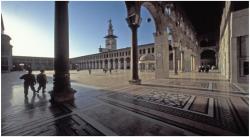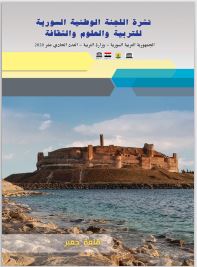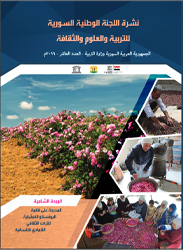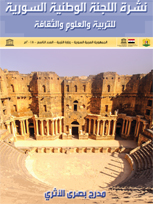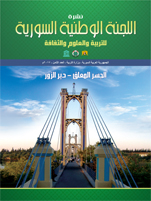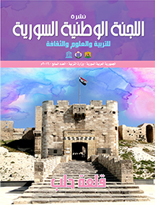Old Damascus
|
- Founded in the 3rd millennium B.C., Damascus is one of the oldest cities in the Middle East. In the Middle Ages, it was the centre of a flourishing craft industry, specializing in swords and lace. The city has some 125 monuments from different periods of its history – one of the most spectacular is the 8th-century Great Mosque of the Umayyads, built on the site of an Assyrian sanctuary.
- Founded in the 3rd millennium B.C., Damascus was an important cultural and commercial centre, by virtue of its geographical position at the crossroads of the orient and the occident, between Africa and Asia. The old city of Damascus is considered to be among the oldest continually inhabited cities in the world. Excavations at Tell Ramad on the outskirts of the city have demonstrated that Damascus was inhabited as early as 8,000 to 10,000 BC. However, it is not documented as an important city until the arrival of the Aramaeans. In the Medieval period, it was the centre of a flourishing craft industry, with different areas of the city specializing in particular trades or crafts. - The city exhibits outstanding evidence of the civilizations which created it - Hellenistic, Roman, Byzantine and Islamic. In particular, the Umayyad caliphate created Damascus as its capital, setting the scene for the city's ongoing development as a living Muslim, Arab city, upon which each succeeding dynasty has left and continues to leave its mark. - In spite of Islam's prevailing influence, traces of earlier cultures particularly the Roman and Byzantine continue to be seen in the city. Thus the city today is based on a Roman plan and maintains the aspect and the orientation of the Greek city, in that all its streets are oriented north-south or east-west and is a key example of urban planning. - The earliest visible physical evidence dates to the Roman period - the extensive remains of the Temple of Jupiter, the remains of various gates and an impressive section of the Roman city walls. The city was the capital of the Umayyad Caliphate. However, apart from the incomparable Great Mosque, built on the site of a Roman temple and over-laying a Christian basilica, there is little visible dating from this important era of the city's history. The present city walls, the Citadel, some mosques and tombs survive from the Middle Ages, but the greatest part of the built heritage of the city dates from after the Ottoman conquest of the early 16th century. - Criterion (i): Damascus testifies to the unique aesthetic achievement of the civilizations which created it. The Great Mosque is a masterpiece of Umayyad architecture, which together with other major monuments of different periods such as the Citadel, the Azem Palace, madrasas, khans, public baths and private residences demonstrates this achievement. - Criterion (ii): Damascus, as capital of the Umayyad caliphate - the first Islamic caliphate - was of key importance in the development of subsequent Arab cities. With its Great Mosque at the heart of an urban plan deriving from the Graeco-Roman grid, the city provided the exemplary model for the Arab Muslim world. - Criterion (iii): Historical and archaeological sources testify to origins in the third millennium BC, and Damascus is widely known as among the oldest continually inhabited cities in the world. The incomparable Great Mosque is a rare and extremely significant monument of the Umayyads. The present city walls, the Citadel, some mosques and tombs survive from the Medieval period, and a large part of the built heritage of the city including palaces and private houses dates from after the Ottoman conquest of the early 16th century. - Criterion (iv): The Umayyad Great Mosque, also known as the Grand Mosque of Damascus, is one of the largest mosques in the world, and one of the oldest sites of continuous prayer since the rise of Islam. As such it constitutes an important cultural, social and artistic development. - Criterion (vi): The city is closely linked with important historical events, ideas, traditions, especially from the Islamic period. These have helped to shape the image of the city and impact of Islamic history and culture. - Integrity (2009) The line of the walls of the old city forms the boundary of the property. Although areas outside the walls that represent the expansion of the city from the 13th century, are considered related to the old city in terms of historical significance, and provide its setting and context, the key attributes of Outstanding Universal Value lie within the boundary. These include the plan of the city and its dense urban fabric, city walls and gates, as well as its 125 protected monuments including the Umayyad Mosque, madrasas, khans, the Citadel and private houses. - The attributes are vulnerable to erosion from a lack of traditional approaches to maintenance and conservation, and use of traditional materials, while its setting and context are threatened by lack of conservation policy for the historical zones outside the walled city and by regional planning projects. Authenticity (2009) Since the inscription of the property, the morphological layout and the spatial pattern of the historic fabric have remained basically unchanged and the key discrete attributes survive. However commercial and semi-industrial activities are spreading into the residential area of the walled city and its suburbs, in places eroding the value of the attributes relating to the urban fabric and their inter-relationships. - Protection and management requirements (2009) Responsibilities for planning control over the old city and its management are in the hands of two government departments (the Commission for Safeguarding the Old Town and the General Directorate for Antiquities and Museums (DGAM). Technical Cooperation for projects and programmes to enhance the city is undertaken by the Ministry of Local Administration and Environment with support from international organizations. The effectiveness of the conservation policy relies on full participation of various interests within the city such as public/private partnerships, all levels of government, the financial community, and citizens. - Legal protection is provided by the Antiquities law 222 amended in 1999 in addition to the Ministerial order no. 192 of 1976 designating the walled city as part of the cultural and historical heritage of Syria. Parliamentary Act N° 826 for the Restoration and Reconstruction/Rebuilding the city within the walls has been reviewed in light of changed conditions, needs and opportunities, and aims at establishing new conditions for the walled city. - A Committee for the Protection and Development of Old Damascus has been established, with representatives of the different bodies to coordinate the planning and building activities in addition to being responsible for the strategic planning for the Old City. - The draft of the Integrated Urban Plan of the old city had been formally approved by Ministerial decision N° 37/A of 2010. A buffer zone has also been delineated but not yet formally approved. - There is a need for the plan, once approved and implemented, to clarify the different levels of protection to be applied to the different parts of the urban fabric, to set out the appropriate interventions Long Description Damascus is considered to be the oldest city as well as the oldest capital of the world. It is the cradle of historical civilizations, constituting a beacon of science and art over time, and a historical encyclopaedia which tells a great part of the history of humanity. In the same way, it represents a historical reference for comparing the systems of architecture and town planning over several thousand years. - Founded in the 3rd millennium BC, Damascus is one of the oldest cities in the Middle East. Dominated to the west by Mount Qasiyun and bounded to the east by the desert, Damascus was founded, with the name of Palmyra, in an oasis that was very fertile thanks to the presence of the River Barada, a meeting place for cultures and caravans. It was the capital of an Aramaic kingdom (11th-7th centuries BC), often at war with the kings of Israel and temporarily conquered by King David. After being defeated twice by the Assyrians, it was definitively conquered by Nebuchadnezzar in 600 BC. It fell into Persian hands in 530 BC, and then in 333 BC it was annexed to the empire of Alexander the Great. The two adjoining areas were unified by the Romans, during the reigns of Septimius Severus and his son Caracalla (AD 197-217). The city was enclosed by a single ring of enclosure walls that are still be identified. After the interval of rule by the Sassanid Parthians, in 636 its fate was sealed permanently as part of the Arab world, becoming the prestigious and monumental capital of the Umayyad caliph. The city then began to expand outside the enclosure walls and enjoyed a time of particular economic prosperity, which continued despite its loss of capital status under the Mameluke dynasty and the devastation wrought during the Mongol incursion. - Damascus preserves a few traces of its long history prior to the Arabic conquest, including some from the Roman period, such as the decumanus, mentioned in the Acts of the Apostles, which coincides with the present-day route that crosses the city from east to west, a road lined with columns which still preserves one of the three monumental arches. - The main entrance to the old city is the al Hamidiyeh souk. The Ayyubid Citadel of Damascus is a masterpiece of military architecture, and its courtyards, walls and two enormous entrances illustrate numerous historical events, including the conquest by Timur in 1400. - At the end of the 4th century, during the reign of Emperor Theodosius, on the site of the ancient Temple of Jove there was a Byzantine church dedicated to St John the Baptist and, since 706, the Great Mosque, built at the behest of al-Walid, the sixth Umayyad caliph. The complex has an external courtyard, bounded by a massive wall and flanked by three minarets in different styles. -The inner courtyard has three sides with a covered double portico and the centre of it is covered by a dome for the ablution ritual that precedes the prayers. Adjoining the porticoes is the Dome of Treasure, a small octagonal pavilion covered with fine mosaics, and surmounted by a dome that stands on eight Corinthian columns. On the fourth side of the internal courtyard is the mosque proper, subdivided by arches into three parallel aisles, cut on a perpendicular line by a transect, the central part of which was covered by a wooden dome that was destroyed in 1401. - The arrangement of its component elements is reminiscent of the Christian churches of Syria and Armenia and represents a significant example of Umayyad art that continues, through the master craftsmen employed, the tradition of Byzantine art. The urban fabric underwent important transformations with the rise to power of the Abbasids: the urban centre ceased to be a unified organism and was divided up into autonomous quarters, each equipped with its own institutions, mosques, public baths, markets, and police corps. In this way, the rectangular blocks from the Hellenistic grid were transformed into the characteristic Islamic urban fabric. Over the centuries guilds of craftsmen and merchants established themselves around the Great Mosque, while the important Christian minority consolidated itself in the north-east quarters of the city, around the churches and sites associated with the conversation of St Paul. |
View Album / old Damascus











